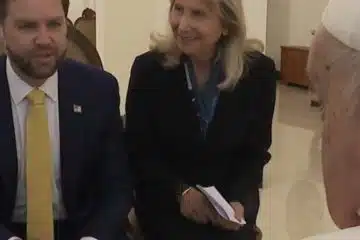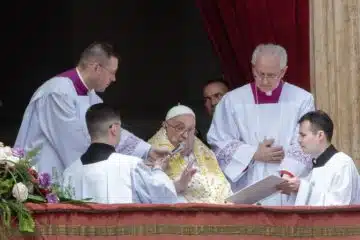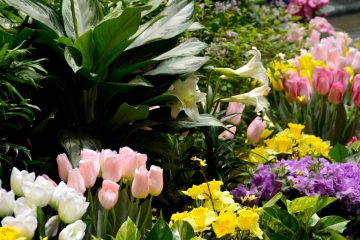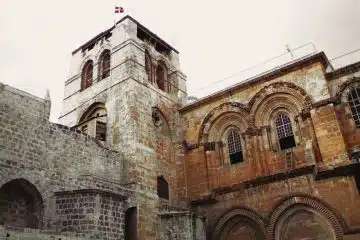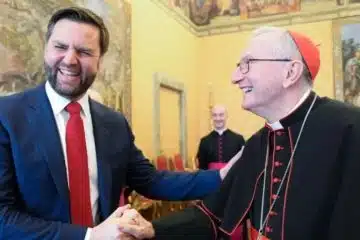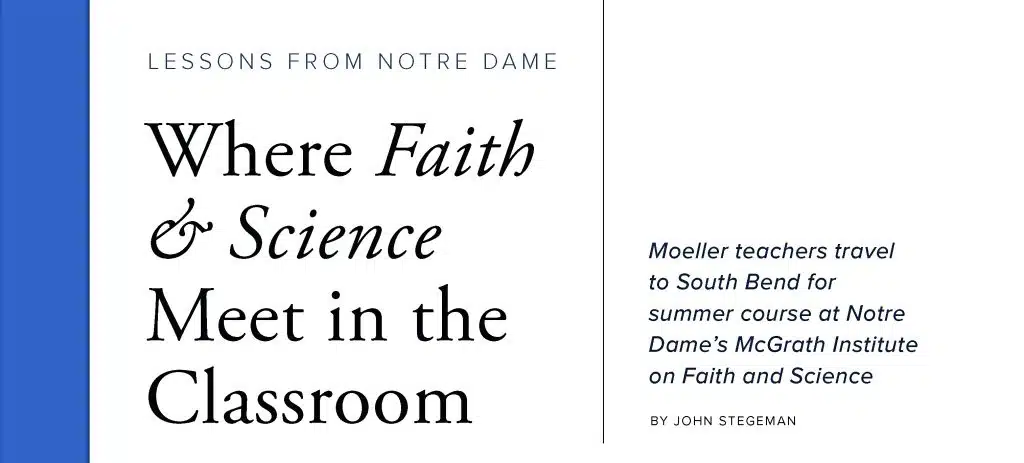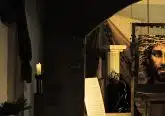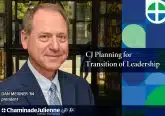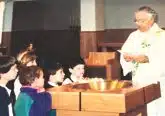Where Faith and Science Meet in the CLassroom
Many young people have left the Catholic Church or, at the very least, find themselves questioning their beliefs over perceived contradictions between the faith and science. At Moeller High School, a science and religion teacher joined forces to address this perceived problem.
Sean Leugers, a science teacher at Moeller, was working at a Catholic school in Columbus about 12 years ago when a student stumped him. The student said he and his friends were discussing Adam and Eve and arguing over whether the story was metaphorical or literal. Which was it?
“I didn’t have a very good answer,” Leugers said. “It bothered me, because here I am at a Catholic school, I should know better. It bothered me so deeply. I had been thinking about [taking] a theology program, and the next day I signed up.”
This led to his ongoing passion for understanding the intersection of faith and science.
Moeller religion teacher, John Hough, shared a similar interest. And so, two years ago, the two traveled to South Bend, IN, for a week-long course at Notre Dame’s McGrath Institute on Church Life, through its Science and Religion Initiative program, to dig deeper.
“We really need to get every student who walks in and out of Moeller to understand religion and science… You study the natural world, you study the supernatural world, and you have to mediate them somehow… Every guy who walks into this building will know religion and science are compatible.”
Leugers said one way they’ve tried to teach the compatibility of faith and science is to have a physics teacher share his or her Catholic witness. Leuger’s classroom is also adorned with Catholic scientists’ images and a Shroud of Turin image. The issue of Adam and Eve still comes up, but now both science and religion teachers are prepared for the conversation.
“We talk [in biology] about how we reconcile Adam and Eve with what we know from the fossil and molecular evidence,” Leugers said. “Then, in religion class, when we got to the proofs of God, John [talks] about evolution and science. The idea is that we [have] religion teachers talking science, and science teachers talking about the Catholic faith and religion.”
Sometimes the discussions really get students thinking, but other times they’re shy about bringing it up.
“I wish [they asked] more,” Leugers said. “I do get questions occasionally. … We can have a pause and talk this out, because, for any guy who asks it, there’s probably 10 or more who are thinking about it but not asking.”
Hough and Leugers took what they learned at Notre Dame back to their own classrooms, and they hope more Moeller teachers join in. Hough said Moeller has long supported Catholic identity in all subjects, but he and Leugers are asking teachers to really consider what a science class, math class art class, etc., should look like in a Catholic school.
“Almost everyone is for having the conversation,” Hough said. “Faith and science have slowly become a bigger conversation across all of our departments. … How does every teacher communicate that in every class? [We want students to think,] ‘When I’m aiming at truth, whether in my chemistry class or studying literature or history, this is all aiming me toward “capital T” Truth and toward God.’”
Leugers and Hough returned to Notre Dame last summer for another course and brought a member of school leadership along. They’re hoping their efforts inspire a grassroots campaign in the school.
“It’s a really special thing about working at a Catholic school to be able to have that unified vision across the sciences of who the human person is, what the world is, who God is, and what we’re here for,” Hough said. “To have that and be able to approach that, to embrace that universal Catholic part of our mission, is a pretty neat thing to do.”
This article appeared in the April 2024 edition of The Catholic Telegraph Magazine. For your complimentary subscription, click here.


